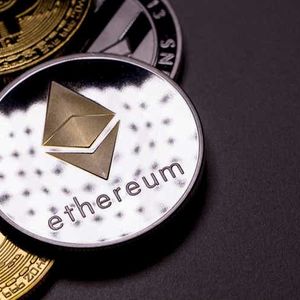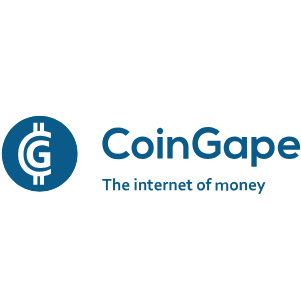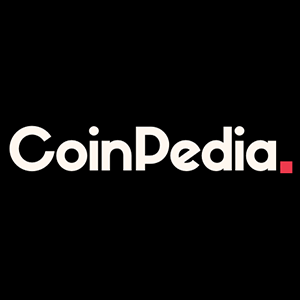Summary While September provided a YoY and MoM boost in revenue, Ethereum's network fees have declined dramatically since the Dencun upgrade. Despite increased transactions per second due to L2 scaling, the value isn't filtering back to ETH, which signals a possible flaw in the chain's economic model. Capital flight from spot Ethereum ETFs in the United States likely hasn't helped the matter with more Ethereum coming out of ETHE than going into Grayscale's Mini Trust. With collapsing network fees and declining coin prices, ETH's circulating P/F valuation multiple has hit 4-year highs. Investors in the United States have never had an easier path to investing in the Ethereum ( ETH-USD ) blockchain. To be fair, it hasn't been all that difficult for the moderately crypto-interested to buy ETH through centralized exchange platforms like Coinbase ( COIN ) or Binance ( BNB-USD ). But for more traditional investors, spot Ethereum ETF approvals in late-July figured to be financial products that put a large, sustained bid on ETH. After more than two months in the wild, I don't think it's a stretch to say the opposite has happened. Despite the massive success of the spot Bitcoin ( BTC-USD ) ETFs since January, Ethereum has not enjoyed the same exuberance from investors. Data by YCharts Not only has Ethereum fallen by over 30% since spot ETFs were launched in the United States, but the coin has badly under-performed Bitcoin and many other leading cryptocurrencies in the market. In this article, we'll attempt to make sense of the under-performance by looking at capital Flows, key metrics on Ethereum mainnet, the layer 2 ecosystem, and the Grayscale Ethereum Mini Trust ETF ( ETH ). Grayscale & Capital Flight For years, the easiest way to get exposure to Ethereum in a traditional brokerage account was through the Grayscale Ethereum Trust ( ETHE ). Prior to converting that fund to an ETF, it was a closed-end fund that often traded at a considerable discount to net asset value. In my view, there were two major factors that contributed to that discount. The first was Grayscale's large 2.5% annual fee. The second was the lack of staking off the fund's assets. Unlike, Bitcoin which runs on a proof-of-work consensus, Ethereum can generate yield through staking. ETH held in US-based ETFs is not staked, thus, an opportunity cost and a discount from the market. Following the approval of spot BTC ETFs in January, we saw a significant level of capital flight out of the Grayscale Bitcoin Trust ETF ( GBTC ) because of the uncompetitive fees. The same has been true for ETHE. However, this time the new lower-fee ETFs aren't making up the difference. It's less of a 'fee flight' for Ethereum and more of a straight up 'capital flight.' Spot ETH ETF Supply (The Block) Since spot funds were launched, the new funds have not made up the difference in the $2.9 billion Ethereum outflow from ETHE. As of October 2nd, the total net flow of capital from the spot ETH ETFs has been a $552 million outflow. Worse for Grayscale, the firm's Ethereum Mini Trust has not been much of a factor as there has only been $294.4 million of inflow into that fund following the substantial seed balance after being spun out from ETHE. There are three other spot ETH ETFs that have brought in more capital. Data by YCharts In the chart above, the Grayscale Mini Trust shows a negative AUM change from the seed balance simply because the price of the underlying has performed so poorly. As an investment option though, I don't actually think Grayscale's Ethereum Mini ETF is a poor choice for those who want tax advantaged exposure to Ethereum. The expense ratio is just 0.15% - an enormous improvement over that of ETHE and like many other funds, that fee has been waived entirely for an introductory period. I should note that it's a big world out there and just because US-based spot ETFs have been a disappointment, there are other ways to buy Ethereum in traditional financial products. Despite the more recent woes, we've seen positive year to date investment capital flow into Ethereum through September: Capital Flow By Asset (CoinShares) As of September 27th, the year to date flow into Ethereum has been $765 million. While positive, frankly, I think this has been massively underwhelming. Especially when compared to Bitcoin. Capital flow into BTC makes up more than 93% of the total crypto capital flow this year. Ethereum is not getting its 'fair share' from investors. I do have a theory as to why and it's not pretty. Mainnet Fees and L2 Scaling In the month of September, the Ethereum blockchain generated $103.7 million in fees. This was a 12% year over year increase from $92.7 million in ETH fees from September 2023 and a 65% increase over August. While fees in September were still well below the 2024 high of $607 million in March, September was the most promising month for ETH fee revenue since June. ETH Price vs Monthly Fees (Token Terminal) The argument has been, and I’ve echoed this , that fee migration from mainnet to L2s isn’t necessarily a bad thing so long as the broader ecosystem scales exponentially and returns that value back to mainnet over time. The thinking here is ETH bulls benefit from getting a smaller piece of an enormous pie rather than a large piece of a far smaller pie. Thus, scaling via L2 theoretically has some validity provided the math works. However, what we've seen in practice since the Dencun upgrade earlier this year is more evident of L2 value extraction from the growing ecosystem rather than value filtering back to ETH if price is the primary indicator. ETH Ecosystem TPS Growth (L2Beat) It’s important to note the scaling factor here and how it has changed over time. While it has come off a bit from the 440 TPS highs in August, this chart is essentially telling us that the transactions per second in the ETH ecosystem from secondary chains are currently about 23x the throughput of mainnet. The scaling multiplier has been improving quite quickly since Dencun and it hasn’t really benefited Ethereum holders. ETH/BTC Weekly (TrendSpider) Despite the growth in secondary chain usage, primary layer network fees have collapsed and the price of ETH has generally been sinking against both dollars and Bitcoin. Valuation When ETH spiked up to $3,800 in May, the circulating price to fee ratio had ballooned to over 300x fees. For Ethereum, this was well ahead of the four-year trend and even nearing historical highs going back to 2020. And yet, even with the 40% pullback in the price of ETH since that P/F spike, network fees had fallen so badly through August that the circulating P/F ratio briefly eclipsed 570x in early September: Ethereum P/F ratio (Token Terminal) For the full month of September, the average circulating price to fee multiple for ETH was 455x fees - the highest full-month average for the ratio since April 2020. The fact that we saw 4 year high P/F valuation multiples for ETH while the coin price is going down is a really telling signal, in my view, and not a good one. From where I sit, this is a clear indication that the economic model for Ethereum is flawed given current demand levels. Network Users MAUs vs Price (Token Terminal) If there is any positive takeaway that I can provide, it’s that monthly active users of Ethereum are still holding up quite well. A multitude of other L1 chains have experienced collapsing MAUs this year but Ethereum has generally held above 6 million monthly users every completed month this year with January being the lone exception. When considering the daily active address growth on the layer 2 chains, the trend looks quite impressive. Here's ETH ecosystem DAAs in a stacked chart format: Ethereum + L2 Chain DAAs (Artemis) The chart above is showing combined daily active addresses on Ethereum, Base, Arbitrum ( ARB-USD ), Blast (BLAST-USD), Optimism ( OP-USD ), Polygon zkEVM ( MATIC-USD ), Scroll, StarkNet (STRK-USD), zkSync Era (ZK-USD), and Zora Network — all ETH L2s. The DAA trend is up and I didn't even include other chains like Polygon POS that have done quite well in the DAA area. The same is true for transactions where the stacked trend is clearly positive: Ethereum + L2 Chain Txs (Artemis) And yet something doesn’t seem to be working. None of this is actually helping ETH. In fact, it’s arguably hurting the value proposition for ETH the asset because the organic bid for gas on mainnet is going away even as ecosystem usage expands. The L2s that are scaling the chain are collecting fees but not paying a large enough portion of that revenue back to the main network compared to the pre-Dencun environment. Closing Summary While the fee market for Ethereum mainnet no doubt improved in September after several months of declining numbers, the larger trend this year has not been a strong one. I’m by no means throwing in the towel altogether on Ethereum or saying that I think it’s not still one of the better bets in the blockchain space; I still do believe that. But there's a potential problem with the structure of the network at the moment and I don’t see a clear catalyst turning that around. Proper valuation has always been an elusive concept in the crypto markets and coins are worth whatever people are willing to pay for them. ETH has a really straightforward bull thesis as the gas token of the largest smart contract ecosystem in the industry. But some of the bullish elements of ETH have been lost; it's once again an inflationary token. Active bid for gas payment has dwindled with the success of L2 scaling. And the capital investment story simply hasn't held up to expectations. For all the reasons listed, ETH might be a half decent contrarian bet at this point as sentiment is poor. However, I'm calling ETH a 'hold' today until we see a more sustained return in mainnet fees from L2 growth.










